How to Cool Down a Wood Stove Quickly 2024
- October 4, 2023
- 1 comment
When you’ve got a wood stove roaring with heat, there might be occasions when you need to cool it down more swiftly than usual. Maybe you’re leaving the house, or perhaps the room has become uncomfortably hot. Whatever the reason, safety is paramount. Here are some tried-and-true methods and tips to cool down your wood stove efficiently and safely.
List How to Cool Down a Wood Stove Quickly:
- Stop Adding Fuel
- Spread Out the Coals
- Close the Air Intake
- Use a Stove Fan
- Open Windows or Doors
- Heat-Resistant Ceramic Tiles
- Water Spritzing
“Nature teaches us balance: For every sun, there’s shade; for every blazing log, a moment to cool and reflect.” — Nathan Timberland
1. Stop Adding Fuel
When operating a wood stove, the continuous addition of wood or other combustibles will naturally keep the flames alive and maintain or even increase the temperature inside. However, when the objective is to cool down the stove, it’s imperative to halt the addition of any further fuel.
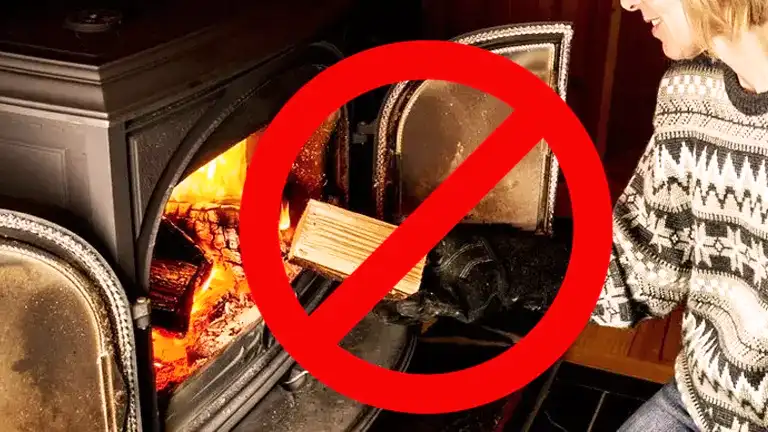
The act of not adding more wood might seem overly simple, but it’s a foundational step in the cooling process. Here’s why:
- Every piece of wood has a combustion cycle – an ignition phase, a sustained burn phase, and a smoldering or dying phase. By not introducing more wood, you’re ensuring that the wood inside completes its cycle and reaches the smoldering phase, where it releases less heat.
- A burning log consumes oxygen. As it nears the end of its combustion cycle, the oxygen demand reduces. Less oxygen consumed means a less intense burn, leading to a cooler stove.
- Fresh wood, when added, can produce more embers and sparks. Embers retain heat for extended periods. By not adding new wood, ember production is curtailed, contributing to the cooling process.
- It’s also worth noting that allowing wood to burn out completely is more fuel-efficient. This ensures that the energy trapped within the wood is fully utilized, maximizing the heat output for every log before it turns to ash.
2. Spread Out the Coals
The distribution of coals and logs within a stove has a direct impact on how intensely the fire burns.
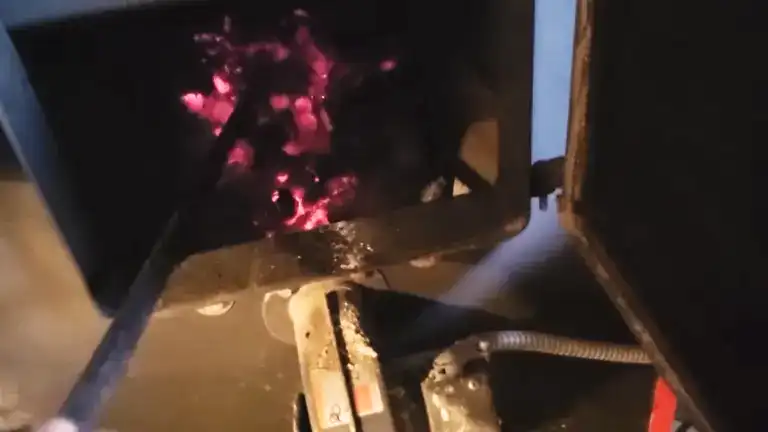
Here’s a deeper dive into why and how spreading out the coals can aid in cooling the stove:
- Coals that are clustered together retain and produce heat more efficiently because they insulate each other and maintain a concentrated heat source. By spreading them out, you’re increasing their surface area exposure to the cooler surrounding environment inside the stove. This enhanced exposure allows the coals to shed heat more rapidly.
- A concentrated pile of coals will have limited oxygen access, especially in the core. While this might sound like it would reduce the burn, it can actually lead to pockets of intense heat as the surrounding coals insulate the core. Spreading the coals out ensures a more uniform oxygen distribution, leading to a more consistent but less intense burn.
- When logs and coals are closely packed, they can sometimes reignite each other, even when one is nearing the end of its burn cycle. By spacing them apart, you minimize this interaction, allowing each piece to burn down without external influence, leading to a faster overall cooling.
- When spreading out the coals, it’s essential to use the right tool, such as a poker, designed for this purpose. This allows for safe adjustment without the risk of burns or unintended stoking of the fire.
- Spreading the coals also offers a visual advantage. By dispersing them, you can better gauge which coals are still active and which are nearing the end of their combustion. This knowledge can be useful if you’re aiming for a specific cooling rate or trying to maintain a minimal fire.
3. Close the Air Intake
Air, specifically the oxygen it contains, is a crucial component for the sustenance of fire. The mechanism behind adjusting the air intake of a wood stove and its effects on the fire’s intensity is rooted in the basic principles of combustion.

Let’s delve deeper into the role of air intake and how its manipulation can be used to cool a wood stove:
- For fire to thrive, it requires three elements: fuel (in this case, wood or coals), heat, and oxygen. This trio is often referred to as the “fire triangle.” By eliminating or reducing any one of these components, the fire can be controlled or extinguished.
- Oxygen supports the chemical reactions occurring during combustion. When wood burns, it reacts with oxygen from the air, producing heat, carbon dioxide, water vapor, and other gases. The more oxygen available, the more vigorously the wood will burn.
- Modern wood stoves come equipped with adjustable controls that regulate the amount of air entering the stove. These controls can be dialed up to increase combustion when starting a fire warming a space quickly or dialed down to reduce the burn rate or cool the stove.
- By reducing or completely closing the air intake, the supply of oxygen to the fire is restricted. This limitation hinders the combustion process. The flames become smaller and less intense, and the temperature inside the stove begins to drop. If the air intake is entirely closed for an extended period, the fire will eventually die out due to a lack of oxygen. However, it’s important to note that while the flames may diminish or disappear, the coals can remain hot for a considerable duration, continuing to release heat.
- While limiting the oxygen supply is effective in cooling down the stove, it can increase the production of carbon monoxide, a colorless, odorless gas that can be hazardous in enclosed spaces. Hence, when using this method, ensure proper ventilation and always have a working carbon monoxide detector in the room.
4. Use a Stove Fan
Stove fans, while simple in concept, play a pivotal role in enhancing the efficiency of wood stoves and in regulating room temperatures.
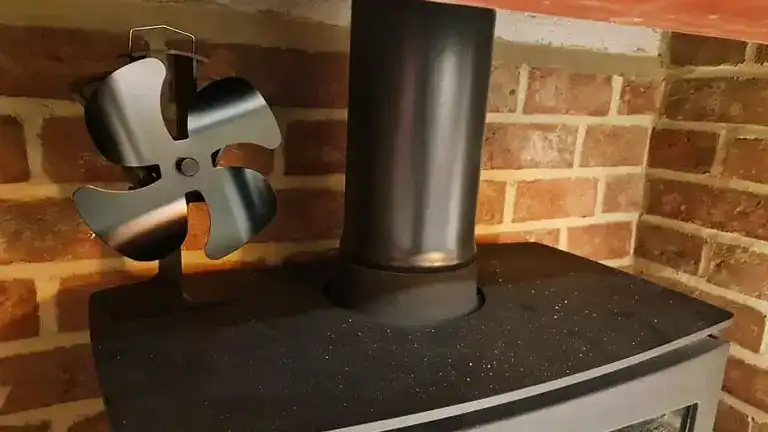
Here’s a deeper exploration into the utility of stove fans and how they assist in the cooling process:
- Unlike conventional fans that run on electricity, many stove fans operate using thermoelectric power. They have a base that absorbs heat from the stove and a cooling fin at the top. The difference in temperature between the base and the fin generates electricity, which powers the fan. As the stove gets hotter, the fan spins faster.
- One primary challenge with wood stoves is the stratification of heat. Hot air, being less dense, rises and can often accumulate near the ceiling, leaving the lower parts of the room cooler. A stove fan helps circulate this hot air, pushing it outward and around the room, ensuring a more even heat distribution.
- As the stove fan disperses the concentrated hot air away from the stove, it reduces the immediate temperature around the stove’s vicinity. This distribution prevents the formation of ‘hot spots’ and allows the room to reach a comfortable temperature more evenly. Consequently, the stove loses heat more rapidly to the surrounding environment, aiding in the cooling process.
- Stove fans are not only effective in cooling down stoves but are also energy efficient. Since they use the stove’s heat as a power source, they don’t require external electricity or batteries. This efficiency makes them environmentally friendly and cost-effective.
- For a stove fan to work effectively, it should be placed at the rear of the stove, but not too close to the flue pipe, as excessive heat can damage the fan. Ensure that there’s enough space for the hot air to flow over the fan’s blades.
- While stove fans are generally safe, it’s essential to ensure they’re in good working condition. Over time, the fan’s efficiency might reduce, or it could get clogged with dust. Regular maintenance and cleaning can ensure longevity and safe operation.
Hey there! If you’re on the hunt for a wood stove fan for your cozy space, take a peek at our article. We think you’ll find it super helpful! 5 Best Wood Stove Fans on Amazon 2023
5. Open Windows or Doors
Ventilation is a natural and effective way to regulate indoor temperatures. When dealing with an overly heated room due to a wood stove, the act of simply opening a window or door can have a significant impact.
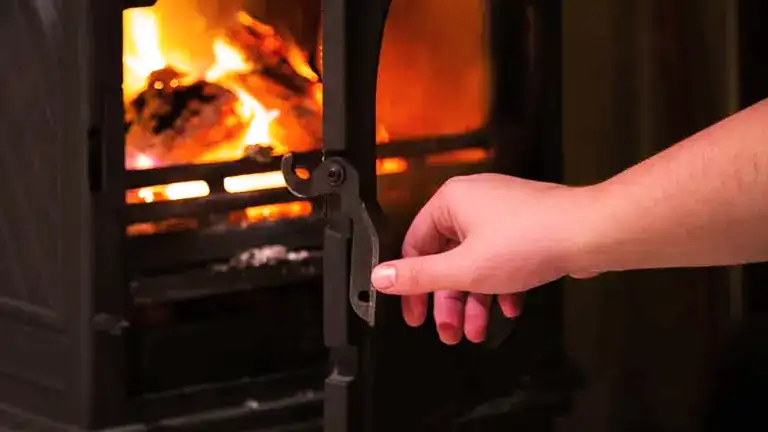
Let’s delve into the nuances of this method:
- Hot air naturally rises and seeks to move from areas of higher concentration (inside the heated room) to areas of lower concentration (the cooler outdoors). By opening a window or door, you create an outlet for this hot air to flow out, thereby reducing the indoor temperature.
- As hot air exits, cooler air from the outside will rush in to replace it. This cooler air not only brings down the room’s overall temperature but also accelerates the cooling of the wood stove and its immediate surroundings.
- For optimal results, consider creating cross-ventilation. This involves opening windows or doors on opposite sides of the room or house, which facilitates a steady flow of air, sweeping away the hot air more efficiently.
- While ventilation is beneficial, it’s crucial to remain mindful of external conditions. On windy days, a strong draft can enter the room and potentially stoke the fire in the stove, making it burn hotter and more intensely. This effect is counterproductive if the aim is to cool down the stove. In such cases, partially opening the window or using another form of ventilation may be more prudent.
- Besides the risk of stoking the fire, drafts can also blow in debris or rain, which could be detrimental to the stove or create a mess in the room. Always consider external conditions and adjust your ventilation strategy accordingly.
- It’s worth noting that while this method is effective, it can lead to heat loss, which might be counterproductive, especially during colder months. Ensure you balance the need for cooling with the desire to maintain an energy-efficient home.
6. Heat-Resistant Ceramic Tiles
Ceramic tiles, especially those designed to resist high temperatures, serve both functional and aesthetic purposes in the context of wood stoves. Their application in homes with wood-burning stoves has grown due to their heat-dissipating properties and their ability to enhance the safety and efficiency of the heating system.
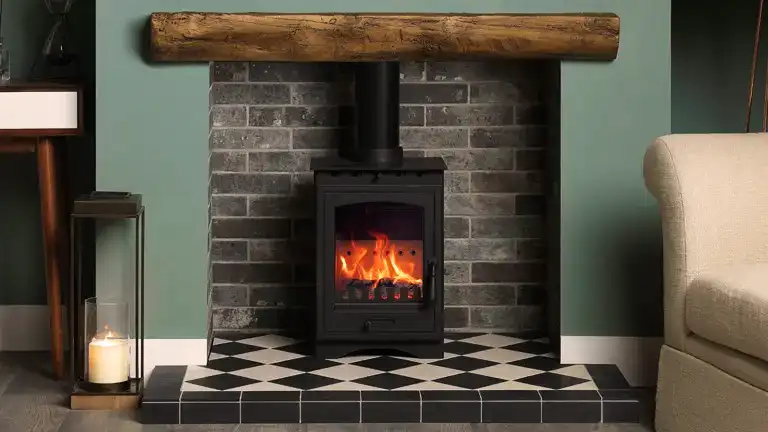
Here’s a deeper exploration of their role:
- Ceramic tiles are naturally good at absorbing heat. When positioned close to a heat source like a wood stove, they can draw in a significant amount of the radiated heat, preventing it from being immediately dispersed into the room. This absorbed heat doesn’t vanish; instead, the tiles store it.
- After absorbing the heat, ceramic tiles don’t hold onto it indefinitely. They release it slowly back into the room, providing a steady and prolonged source of warmth even after the stove has cooled down. This feature can enhance the efficiency of your heating setup, ensuring that the room stays warm for longer periods without needing to constantly feed the stove.
- By absorbing much of the stove’s radiated heat, ceramic tiles act as a protective barrier. This is particularly crucial for walls and floors that might otherwise be exposed to intense heat, which could pose a fire risk or cause damage to materials not designed to handle such temperatures. The tiles ensure that the heat affecting these surfaces is moderated.
- Beyond their functional benefits, ceramic tiles can also elevate the look of the space surrounding the stove. Available in various designs, colors, and finishes, they can be chosen to match the room’s décor, making the stove area both a functional and visual centerpiece.
- When installing heat-resistant ceramic tiles, ensure there’s a small gap between tiles to account for expansion when they heat up. Using a heat-resistant adhesive or mortar is also crucial to ensure the tiles remain securely in place under high temperatures.
- Ceramic tiles are durable and require minimal maintenance. Occasional cleaning to remove soot or dust will keep them looking pristine. Additionally, their heat-resistant properties don’t diminish over time, ensuring they remain effective throughout their lifespan.
7. Water Spritzing
Utilizing water to combat the intense heat of a wood stove can be effective, but it’s not without its risks. Water spritzing as a method to cool down the stove involves a careful balance and understanding of both the science behind the process and the potential dangers.

Let’s break it down
- When water is introduced to a high-heat environment like the inside of a wood stove, it undergoes a phase change, turning from liquid to vapor (steam). This phase change requires energy (in the form of heat), which the water absorbs from the fire. As a result, the overall temperature inside the stove is reduced.
- Even a small amount of water can absorb a significant amount of heat when it vaporizes, leading to a rapid drop in temperature. This can be particularly useful when there’s an immediate need to reduce the stove’s heat output.
- The very property that makes water spritzing effective also poses risks. Introducing too much water too quickly can lead to a sudden and vast production of steam, increasing the pressure inside the stove. This could potentially lead to a steam explosion. Additionally, rapid cooling can cause metal components of the stove to contract quickly, risking damage or warping.
- Apart from potential warping, sudden temperature changes might cause the metal or other materials in the stove to weaken over time due to repeated thermal stress. Ceramic or glass components, if present, might also crack if exposed to sudden cooling.
- If you decide to use the water spritzing method, ensure you do it correctly. Use a spritz bottle that produces a fine mist and lightly mist the inside of the stove. This ensures that only a small amount of water is introduced at any given time, minimizing risks.
- Remember that when water turns to steam, it expands significantly in volume. Ensure there’s a safe avenue for this steam to escape, like a flue or chimney, to avoid undue pressure buildup.
Safety Precautions
- Always Wear Gloves: When working with a hot wood stove, always wear heat-resistant gloves. This will protect your hands from burns and allow you to work more confidently.
- Monitor Carbon Monoxide: Ensure that you have a working carbon monoxide detector in the same room as your wood stove. If you’re limiting the air to the stove, there’s an increased risk of carbon monoxide production.
- Don’t Use Water Excessively: Pouring a lot of water on a hot stove or fire can cause steam explosions or even crack the stove. Use the water spritzing method sparingly.
- Keep Children and Pets Away: When trying to cool down your wood stove, ensure that children and pets are kept at a safe distance. They might be unaware of the heat and risks associated with a hot stove.
Conclusion
Cooling down a wood stove quickly requires a combination of methods and safety precautions. By understanding the mechanics of your stove and the principles of combustion, you can manage the heat output effectively. Always prioritize safety and never rush the process. With patience and care, you can ensure that your wood stove is a warm, comforting, and safe addition to your home.
Related Articles:
- How To Deal With Backdraft Issues in Wood Stoves and Fireplaces
- How to Move a Wood Stove Safely and Securely
- How to Ensure Proper Ventilation and Airflow for Your Wood Stove
- How to Get Wood Stove Heat to Other Rooms: A Comprehensive Guide
- How to Choose the Best Wood Stove Pipe
- How To Clean Your Chimney
- How to Install a Wood Stove in the Basement 2023
FAQs
- Is it harmful to the wood stove if it’s cooled down rapidly?
While most wood stoves are built to handle varying temperatures, rapid cooling (such as pouring a large amount of water) can cause the metal to contract quickly, potentially damaging or warping it. Always opt for gradual cooling methods. - Can I use any kind of fan to help cool down the stove?
While regular fans can distribute room air, stove fans are specifically designed to operate at higher temperatures near stoves. They’re more effective and safer in this environment. - Why shouldn’t I just throw cold water onto the stove to cool it down?
Rapid cooling using cold water can lead to metal warping, cracking of the stove, or even steam explosions. It’s a dangerous method and is not recommended. - I’ve spread out the coals, but the stove remains hot. What’s happening?
Spreading the coals reduces the fire’s intensity, but the stove retains heat in its material. It will cool down gradually as it releases stored heat. - How do heat-resistant ceramic tiles help in cooling the stove?
These tiles absorb and store heat, releasing it slowly over time. By drawing away and dispersing heat, they can reduce the immediate temperature around the stove. - If I’m using the water spritzing method, won’t the steam increase room humidity?
Yes, it can. However, the amount of steam from light spritzing is minimal. If you use this method frequently or excessively, it might raise the room’s humidity levels. - Can I use ashes to help cool down the stove?
Partially. Spreading a layer of ash over the coals can insulate and reduce their oxygen supply, making them burn out faster. However, always ensure proper ash disposal afterward. - Why does closing the air intake help in cooling the stove?
Fire requires oxygen to burn. By limiting the oxygen supply via the air intake, you’re essentially starving the fire, which makes it burn slower and cooler. - Is it safe to sleep with the stove still warm?
It’s generally safe to sleep with a warm stove, as long as the fire is under control and there’s no risk of embers or sparks escaping. Ensure there’s a carbon monoxide detector in the room and it’s working correctly.
Thank you for delving into our comprehensive guide on How to Cool Down a Wood Stove Quickly 2023. We hope that the information provided not only aids in your safe wood stove usage but also enriches your understanding of its intricacies. Your experiences, insights, and thoughts are invaluable to us and our community. Please feel free to share any anecdotes or tips related to cooling down wood stoves in the comments below. Together, by sharing knowledge, we create a warmer and safer space for all stove enthusiasts.

David Murray
Forestry AuthorI'm David Murry, a forestry equipment specialist with a focus on chainsaw operation. With over 13 years of experience, I've honed my skills in operating and maintaining a wide range of machinery, from chainsaws to log splitters. My passion for the outdoors and commitment to sustainable forestry drive my work, which emphasizes safety, efficiency, and staying updated with industry advancements. Additionally, I'm dedicated to sharing my expertise and promoting environmental awareness within the forestry community.


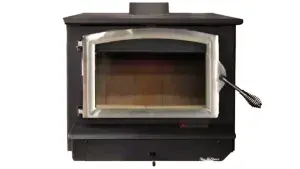



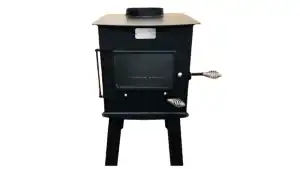



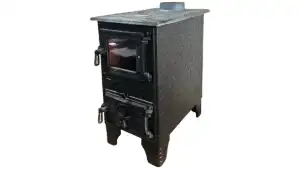
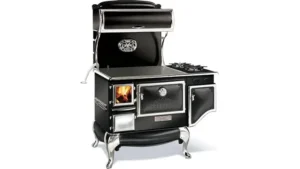
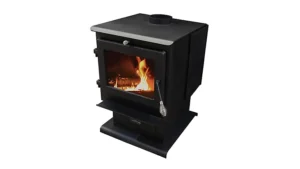
Most of your "ideas" would immediately increase the heat coming from the wood stove. Starving the burn of oxygen is the only real solution.
David Goodrow
October 5, 2023 11:11 pm